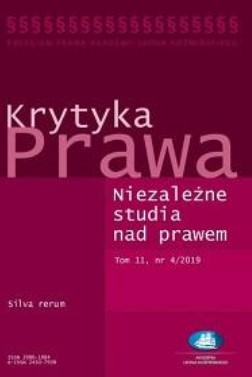Three Models of Judicial Free Speech
and Technological Challenges
Three Models of Judicial Free Speech
and Technological Challenges
Author(s): Paweł SkuczyńskiSubject(s): Law, Constitution, Jurisprudence, Sociology of Law
Published by: Akademia Leona Koźmińskiego
Keywords: judges; communication; new technologies.
Summary/Abstract: The article deals with the normative patterns of communication of judges in a theoretical perspective. Their identification is thus taken as a universal problem, occurringin all legal cultures and regardless of current disputes concerning them. It is assumedthat normative patterns of communication among judges are built on the understanding of the role of the judge and the place of the judiciary within checks andbalances. Based on the assumption that the role of judges and the status of thejudiciary have evolved, three successive historical models of judicial communication were proposed, i.e. the first model – impersonal, the second – self-restrained,and the third – accurate communication. The thesis was also put forward that thelast of the models may prove to be inadequate in the face of contemporary challenges,resulting primarily from cultural changes driven by the development of newcommunication technologies.
Journal: Krytyka Prawa
- Issue Year: 14/2022
- Issue No: 4
- Page Range: 118-134
- Page Count: 17
- Language: English

